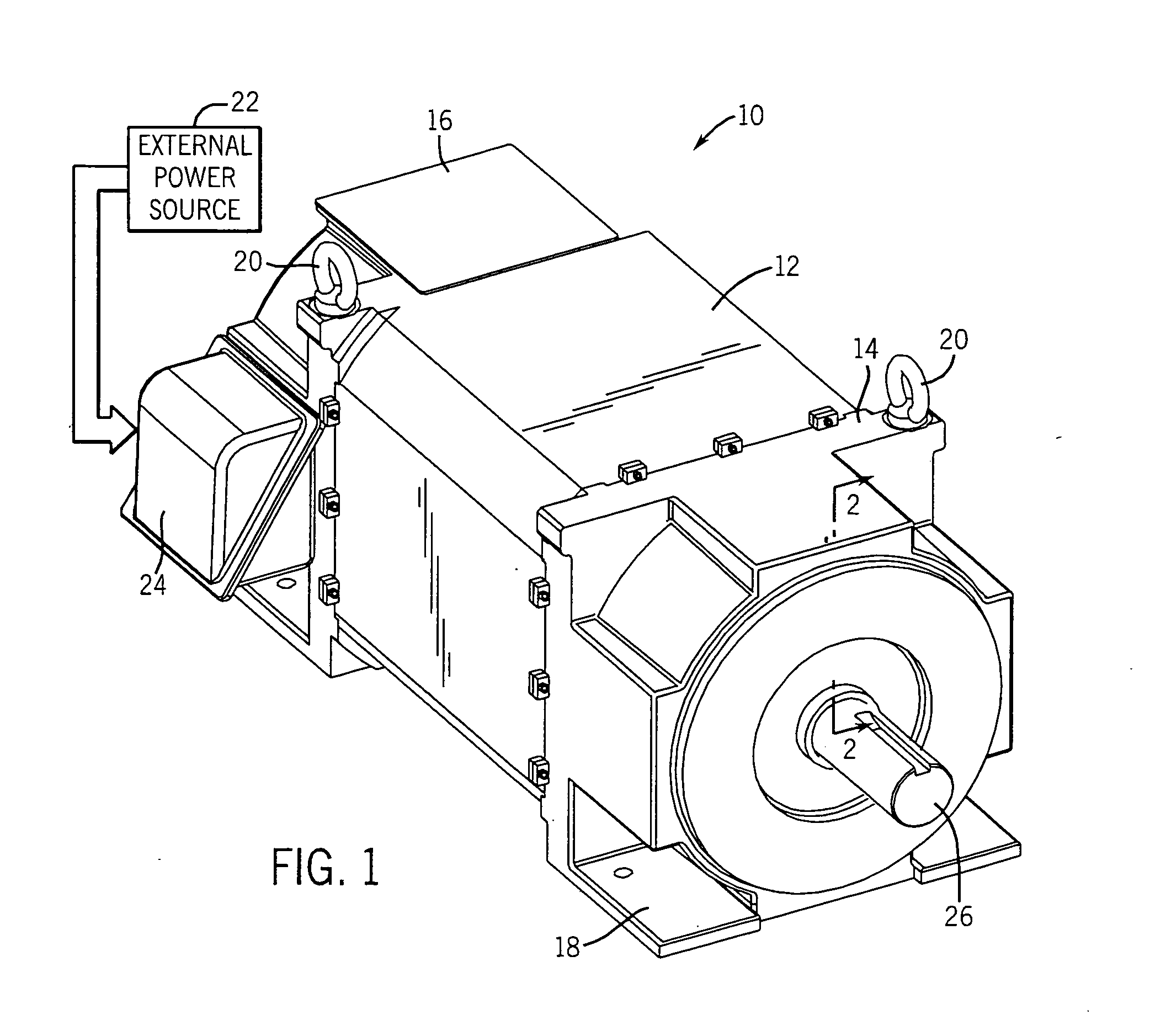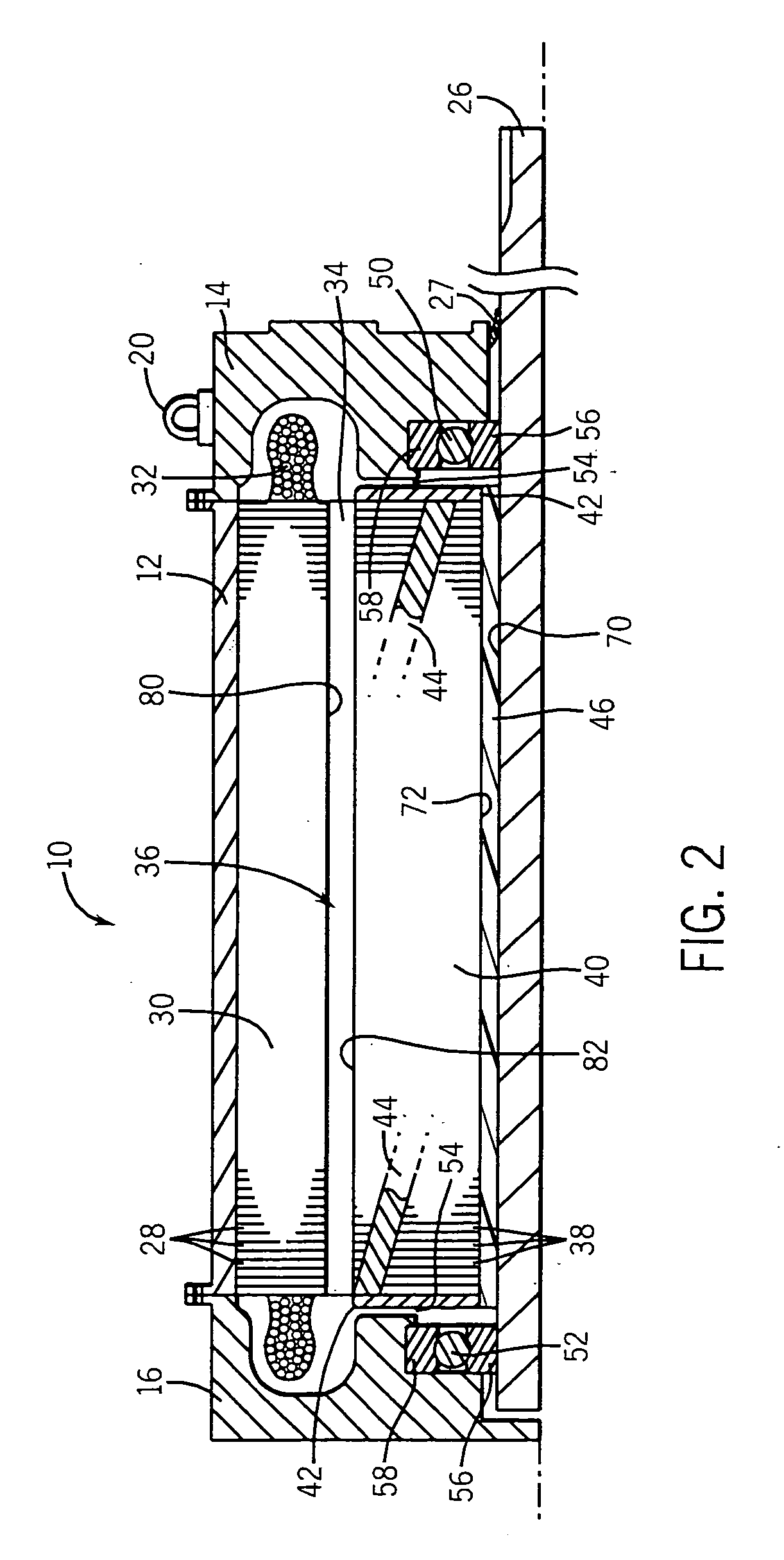Apparatus and method for reducing shaft charge
- Summary
- Abstract
- Description
- Claims
- Application Information
AI Technical Summary
Benefits of technology
Problems solved by technology
Method used
Image
Examples
Embodiment Construction
[0015] As discussed in detail below, embodiments of the present invention provide apparatus and methods for reducing the build-up of charge within rotatable members of electromechanical devices. Turning to the drawings, FIG. 1 illustrates an exemplary electric motor 10. In the embodiment illustrated, the motor 10 comprises an induction motor housed in a motor housing. The exemplary motor 10, particularly the motor housing, comprises a frame 12 capped at each end by front and rear endcaps 14 and 16, respectively. The frame 12 and the front and rear endcaps 14 and 16 cooperate to form a protective enclosure or motor housing for the motor 10. The frame 12 and the front and rear endcaps 14 and 16 may be formed of any number of materials, such as steel, aluminum, or any other suitable structural material. Advantageously, the endcaps 14 and 16 may include mounting and transportation features, such as the illustrated mounting flanges 18 and eyehooks 20. Those skilled in the art will apprec...
PUM
 Login to View More
Login to View More Abstract
Description
Claims
Application Information
 Login to View More
Login to View More - R&D
- Intellectual Property
- Life Sciences
- Materials
- Tech Scout
- Unparalleled Data Quality
- Higher Quality Content
- 60% Fewer Hallucinations
Browse by: Latest US Patents, China's latest patents, Technical Efficacy Thesaurus, Application Domain, Technology Topic, Popular Technical Reports.
© 2025 PatSnap. All rights reserved.Legal|Privacy policy|Modern Slavery Act Transparency Statement|Sitemap|About US| Contact US: help@patsnap.com



